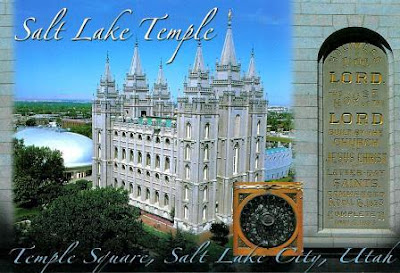Santiago de Compostela in Galicia, is internationally known as one of the most famous pilgrimage destinations in the world.
Since the ninth century, pilgrims from around the world, travel through kilometers on foot to venerate the relics of the Apostle James the Greater, one of the apostles of Jesus Christ, whose alleged tomb is in the cathedral of Santiago de Compostela.
In 1985 the city's Old Town was designated a UNESCO World Heritage Site.
This city was on the top of my spanish must visit list for quite some time but this month I finally got to visit Santiago.
I already had a few cards from there but I've sent one to myself, the one with the Acibecharía façade.
A small church was first built over the tomb of St. James shortly after it was discovered in 819 AD. This was destroyed by al-Mansur's Moorish army in 997, though Almansor left the relics of the Apostle undisturbed. He did, however, force Santiago's citizens to carry the bells of the tower to the mosque in Cordoba (they have since been returned).
Despite its Baroque facade, the present cathedral of Santiago de Compostela is predominantly Romanesque; in fact, one of the finest Romanesque churches in Spain. Construction began in 1060 in the reign of Alfonso VI and was completed in 1211.
Various elements were added in later centuries, culminating in the dramatic Baroque transformation of the exterior in the 16th-18th centuries. The interior of the cathedral, however, retains its pure Early Romanesque style.
www.lafabricadenikis.com
The remains of St. James, the raison d'être of the cathedral, were lost in 1700 after being hidden before an English invasion. Fortunately, they were rediscovered during building work in 1879.
Actually, three skeletons were found, presumed to be James and two of his disciples. The one belonging to the Apostle was identified thanks to a church in Tuscany, which possessed a piece of his skull that exactly fitted a gap in one of the discovered skulls. The identity was confirmed in 1884 by Pope Leo XIII and reinforced by John Paul II's visit in 1982.
The spectacular Baroque facade of the cathedral, known as the Obradoiro facade, was added between 1738 and 1750 by an obscure local architect, Fernando de Casas. Made of granite, it is flanked by huge bell towers and adorned everywhere with statues of St. James as the pilgrim, with staff, broad hat and scallop-shell badge.
The ground rises to the cathedral, which is reached by a magnificent quadruple flight of steps, flanked by statues of David and Solomon. Access to the staircase is through fine wrought-iron gates marked with a seashell. - in: http://www.sacred-destinations.com/spain/santiago-cathedral
%20-%20C%C3%B3pia.jpg)
Fotografia: D. Leiva
The façade "da Acibecharía" is in the Praza da Inmaculada or Acibecharía, draining the last section of urban roads: French, Primitive, Northern and English through the old gate Franxígena or Paradise door. The Romanesque portal was built in 1122 by Bernardo, treasurer of the temple. This portal was demolished after suffering a fire in 1758. The new façade was designed in Baroque style by Lucas Ferro Caaveiro and finished by Domingo Lois Monteagudo and Clemente Fernández Sarela in the neoclassical style in 1769, although it retained some traces of the baroque. - in: wikipedia




%20-%20C%C3%B3pia.jpg)
%20-%20C%C3%B3pia.jpg)
%20-%20C%C3%B3pia.jpg)
.jpg)
.jpg)
%20-%20C%C3%B3pia.jpg)
%20-%20C%C3%B3pia.jpg)
%20-%20C%C3%B3pia.jpg)
.jpg)
%20-%20C%C3%B3pia.jpg)
%20-%20C%C3%B3pia.jpg)
.jpg)
%20-%20C%C3%B3pia.jpg)
%20-%20C%C3%B3pia.jpg)
%20-%20C%C3%B3pia.jpg)





%20-%20C%C3%B3pia.jpg)
.jpg)
.jpg)
%20-%20C%C3%B3pia.jpg)
.jpg)
%20-%20C%C3%B3pia.jpg)
%20-%20C%C3%B3pia.jpg)
%20-%20C%C3%B3pia.jpg)
%20-%20C%C3%B3pia.jpg)


.jpg)
%20-%20C%C3%B3pia.jpg)




 The first line of the Jungfrau Railway, connecting Interlaken to the
Jungfraujoch, was opened in 1912, giving the region a valuable lead.
The first line of the Jungfrau Railway, connecting Interlaken to the
Jungfraujoch, was opened in 1912, giving the region a valuable lead..jpg)
%20-%20C%C3%B3pia.jpg)


.jpg)
.jpg)